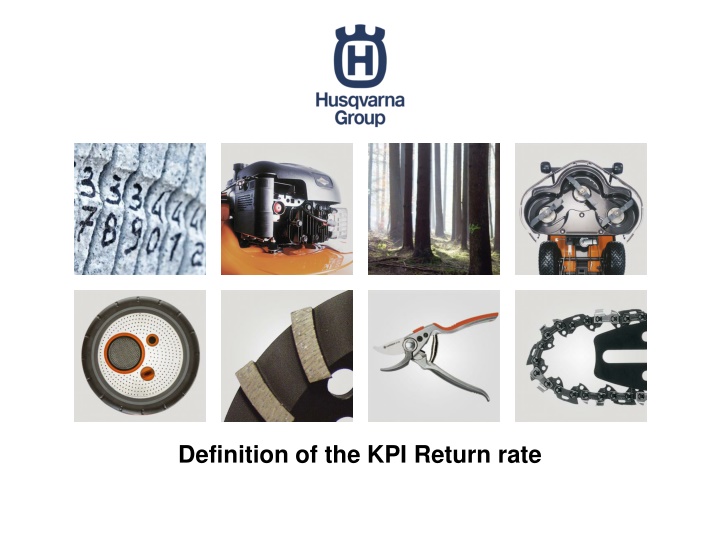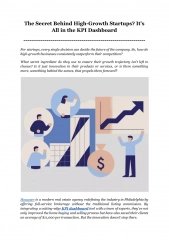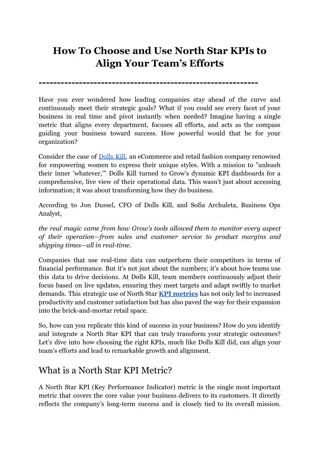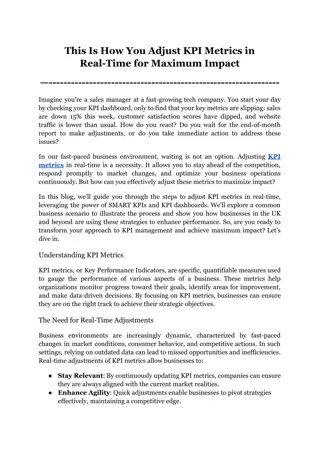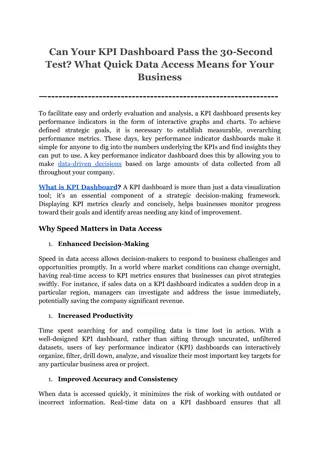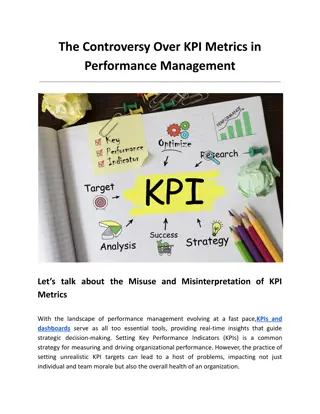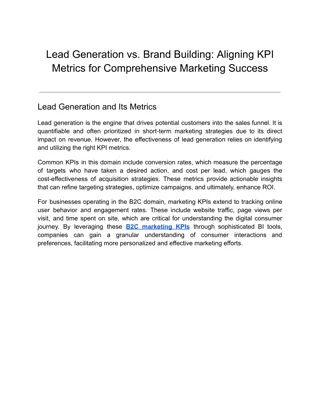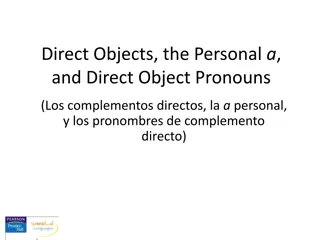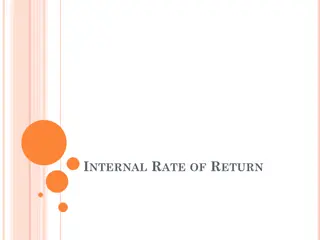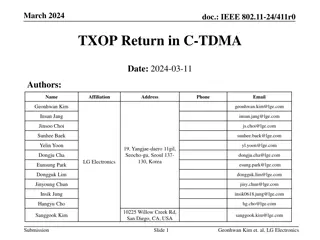Definition of KPI Return Rate for Direct Material Suppliers
This document defines the KPI return rate for suppliers of direct material, focusing on measuring supplier performance in delivering conforming material to factories and detecting nonconformance material. Terminology and methods for calculating and handling nonconforming material are provided, along with discussions on identifying nonconformance versus conformance. The purpose, terminology, calculation, and method are outlined to facilitate understanding and implementation of the KPI return rate.
Uploaded on Feb 28, 2025 | 0 Views
Download Presentation

Please find below an Image/Link to download the presentation.
The content on the website is provided AS IS for your information and personal use only. It may not be sold, licensed, or shared on other websites without obtaining consent from the author.If you encounter any issues during the download, it is possible that the publisher has removed the file from their server.
You are allowed to download the files provided on this website for personal or commercial use, subject to the condition that they are used lawfully. All files are the property of their respective owners.
The content on the website is provided AS IS for your information and personal use only. It may not be sold, licensed, or shared on other websites without obtaining consent from the author.
E N D
Presentation Transcript
Purpose This document defines the KPI return rate for suppliers of direct material. The purpose is to measure our supplier performance of delivering conforming material into our factories. The KPI measures the amount of nonconformance direct material that we detect in our factories in relationship to the amount of volume of received direct material. Nonconforming direct material does not conform to the drawing, specifications and/or agreed upon standards. Quantities will be reported in the units of measure in which they are purchased. This applies to production parts / saleable units.
Terminology 1 Return Released Supplier On Transit Quantity OK Reworked Released Stock/Line Received Factory In comming inspection Suspected Checked / Sorted OK R E L E A S E D Reworked In house, vendor or 3rd party Scrapped Sorted NOK Return Blocked material
Terminology 2 Received: Direct material that has been registerd in a Husqvarna factory system as received. Blocked: Direct material that are under evaluation and therefore restricted material. Has a status Not available in the system. Checked / Sorted OK: Suspected material that has been sorted and/or confirmed to be ok. Has a status Available in the system. Sorted NOK: Suspected material that has been sorted and confirmed to be nonconforming material Scrapped: Sorted NOK material that the supplier has decided to scrap Rework: Sorted NOK material that the supplier and Husqvarna has agreed to rework. Returned: Sorted NOK material that Husqvarna has agreed to return. Released: Blocked direct material that has been analyzed and placed in any of the catagories, Sorted OK, Scrapped, Reworked or Returned. The physical parts are no longer in the restricted area.
Calculation SORTED NOK Return rate = 1 000 000 * Received
Method When a Husqvarna factory identifies suspected material they should immediately remove the batch of physical parts, and the parts in the system, into a restricted material area. In normal case all sorting of suspected material should be handled by the supplier. The suppliers should be asked if they want to have the batch delivered back to them or if they want to have it delivered to a 3rd party sorting company. If there is a critical need to sort the suspected material, it could be done by Husqvarna. If Husqvarna or the suppliers sorts the complete batch at a Husqvarna site then only the actual nonconforming parts will have the status Sorted NOK . If the supplier takes back the complete batch then the complete batch will get the status Sorted NOK . If the supplier sort at Husqvarna site or sends the batch to a 3rd part sorting company then only the actual nonconforming parts will have the status Sorted NOK if the Sorted NOK parts are identified and available within 10 working days.
Nonconformance vs Conformance Nonconformance Conformance Parts which do not meet drawing specifications or dimensional, functional, or appearance standards as called out in the specifications. Parts that meet all drawing specifications but are not useable . Out-of-spec parts that require rework/repair in order to be used. Parts that meet all specifications and/or standards but have been claimed by a Husqvarna customer/end user. Parts damaged from inadequate packaging or transportation for which the supplier is responsible. Parts not released and approved for production and/or have no released drawing (i.e. launch parts, sample/trial parts, DOE parts, pre-productions parts, etc.). Parts that are outside the production system will be addressed through prototype quality measures. Interim approved PPAP with any defects outside of the boundaries defined by the deviation. Parts that have an approved deviation for an out-of-spec condition cannot be assigned PPM for rejects associated with the deviated characteristic. Shipments that are received with mixed parts Parts that are the wrong revision level after the break point has been established. Shipments received where the lable on hte box does not match with the parts inside the box. Delivery errors, Quantity errors ( to few too many ) This is delivery deviation
How to handle different cases in the systems? Case Status in the system Return rate status 1. A factory places a batch of material in stock. Available Received 2 a. A factory places a batch of received material in incoming inspection area Blocked Not available Received 2 b. Incomming inspection checked the received material and found no defects Available Received 3 a. Nonconforming material is identified in stock or at the line. Batch of material is placed in the area for blocked material. Blocked Not available Received 3 b. Supplier doesn t want to send the batch to a third party. Factory sends back the batch to the supplier Returned 100% Received , 100% Returned 4 a. Batch of blocked material is sent to 3rd party for sorting Blocked Not available Received 4 b1. A 3rd party sorted out 70% conformance parts, which were sent back to the factory, and 30% nonconformance parts which were scrapped after agreement with the supplier. 70% Available 30 % Returned 100% Received 30 % Returned 4 b2. A 3rd party sorted out 30% nonconforming parts and reworked the parts to be conforming parts and send them back to the factory. 100 % Available 100% Received 30 % Returned 5. Supplier delivers nonconforming material, but after risk evaluation a decision is taken to use it anyway. 100 % Available 100% Received , 100% Returned 6. A batch is returned to a supplier as nonconforming material supplier proofs it according to specification. We did a mistake - the supplier delivered correct material. Not available Adjust 100% returned to 0% returned for the batch.
Direct material vs Indirect material packaging material Direct material Indirect material Parts that has a Husqvarna specification/drawing, is part of a product BOM and are sourced by commodity purchasing. Material that does not have a Husqvarna specification/drawing and/or is not part of a product BOM. Material that are purchased by the local factory organisation. Example: - Labels - Packaging boxes - Grease or chemicals that are part of the product BOM - Service parts that are included inside the packaging box Example: - Tape and staples for the packaging box - Grease or chemicals that are not part of the product BOM - Material that are used to support the assambly/packaging process, but is not part of the product BOM.
